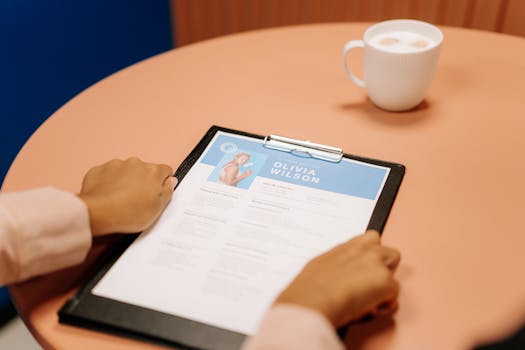Career
Master Your Day: The Essential Guide to Time-Management Apps
Discover how time-management apps can transform your daily routine. Improve productivity and organization while reducing stress and achieving your goals effectively.
Advertisement
In the hustle and bustle of daily life, having an organized routine can significantly enhance productivity. Time-management apps are powerful tools that can help streamline this process. By utilizing technology effectively, individuals can better manage their tasks, appointments, and overall time management.
Establishing a daily routine may seem challenging, but time-management apps simplify this task. They allow users to categorize tasks, set reminders, and visualize progress, making organization more manageable. As such, these applications play an essential role in today’s digital age.
Let’s explore the benefits of using these apps, the top features to consider, and how they can fundamentally change your daily routine for the better. A well-planned routine not only increases productivity but also reduces stress.
Understanding Time-Management Apps
Time-management apps are designed to help users allocate their time efficiently. They assist in scheduling tasks, tracking deadlines, and maintaining focus. These applications can be a game changer in enhancing productivity.
Typically, these apps offer features like calendars, timers, and to-do lists. Each tool is tailored to provide users with different ways to visualize their tasks. This flexibility can cater to various personality types.
Moreover, users can often sync these apps across multiple devices. This synchronization ensures that schedules remain consistent, allowing for an uninterrupted workflow. Accessibility can greatly improve how we manage our commitments.
Many time-management apps offer tracking functionalities. With these tools, individuals can identify where they spend most of their time. Understanding this can lead to more informed decisions about time use.
In essence, these apps are not merely about task completion. They encourage mindfulness about how time is spent daily, leading to enhanced life satisfaction. Awareness can often lead to significant improvements in personal and professional productivity.
Features to Look for in a Time-Management App
When selecting a time-management app, certain features can enhance your experience. A user-friendly interface is crucial for ease of use. Complex apps can lead to frustration and decreased productivity.
Customizable reminders serve as excellent motivators. Users can set alerts for tasks based on their preferences. This feature can significantly enhance task completion rates by ensuring accountability.
Integration with other applications can boost functionality. Look for apps that work seamlessly with calendars, email, and project management tools. This connectivity fosters a holistic approach to time management.
Analytics features can provide valuable insights. By examining how time is allocated, users can effectively identify areas for improvement. Analysis leads to enhanced decision-making regarding time usage.
It’s also essential to consider mobile compatibility. A great app should be usable on both desktops and smartphones, allowing access anytime, anywhere. This convenience ensures that planning happens on the go.
Benefits of Using Time-Management Apps
Utilizing time-management apps can lead to increased productivity. By organizing tasks systematically, users can focus on completing priorities without distractions. This streamlined approach allows for efficiency in work processes.
These apps help improve time awareness. By tracking how time is spent, users gain insights into their routines. This awareness reduces procrastination and promotes accountability, enhancing overall focus.
Having a clear visual representation of tasks can reduce anxiety. Knowing what to accomplish each day creates a sense of control. This proactive approach leads to a more relaxed mental state.
Time-management apps can also encourage goal-setting. Breaking down larger projects into smaller, actionable tasks becomes easier. This method not only clarifies objectives but also makes achieving them more attainable.
Moreover, as collaboration tools evolve, some apps now allow for team management. Teams can share tasks and deadlines, making collective productivity more manageable. Enhanced communication often results in improved outcomes.
Popular Time-Management Apps Overview
Many time-management apps cater to various needs. Below are some popular choices, each offering unique features that enhance productivity. Familiarizing yourself with these options can be beneficial.
| App Name | Key Features | Platform |
|---|---|---|
| Trello | Board-style project management, collaboration features | Web, iOS, Android |
| Todoist | Task prioritization, project tracking, collaboration | Web, iOS, Android |
| Asana | Project management, task assignment, timelines | Web, iOS, Android |
| RescueTime | Time tracking, productivity analyses, focus tools | Web, iOS |
| Google Calendar | Event scheduling, reminders, integration with other apps | Web, iOS, Android |
How to Effectively Use Time-Management Apps
To maximize the potential of time-management apps, set clear goals. Determine what needs to be accomplished daily, weekly, or monthly. Establishing a timeline helps keep tasks organized and prioritized.
Regularly update your app. Ensure all tasks and deadlines are current to avoid confusion. Daily or weekly reviews can keep your schedule aligned with your goals and any changes.
Utilize reminders diligently. Set alerts to notify you before upcoming deadlines. This practice will help build a rhythm for accomplishing tasks on time.
Stay consistent with your app usage. Habit formation takes time, so try to incorporate the app into your daily routine. Consistency breeds familiarity, leading to a more effective planning process.
Lastly, reflect on your productivity trends. Periodic evaluations can reveal progress and areas that need attention. Adjust your approach based on these insights to enhance efficiency further.
Common Mistakes to Avoid
Many users make mistakes when adopting time-management apps. One common error is neglecting to utilize all features. Ensure you explore all tools available within the app for maximum benefit.
Another mistake is overloading your task list. Keep tasks manageable and prioritize effectively. An overcrowded list can lead to confusion and a feeling of being overwhelmed.
Failing to review progress regularly can hinder improvement. Regular evaluations can reveal patterns, enabling smarter decision-making. Feedback is essential for growth in any time-management strategy.
Relying solely on digital tools may limit effectiveness. Sometimes, a paper planner or visual calendar can complement technology. Explore various methods to find what works best for you.
Lastly, forgetting to set boundaries can lead to burnout. While productivity is essential, ensuring self-care should remain a priority. Balance is key to sustainable productivity.
Conclusion
Planning your daily routine with time-management apps can revolutionize how you organize your life. By understanding features and benefits, you can make informed decisions. The right app not only enhances productivity, but it also promotes a healthier balance between personal and professional life.
Adopting effective usage habits and avoiding common pitfalls will further enhance your time-management practices. Therefore, make the most of these tools to lead an organized life and accomplish your goals. In doing so, you cultivate a productive and fulfilling daily routine.





